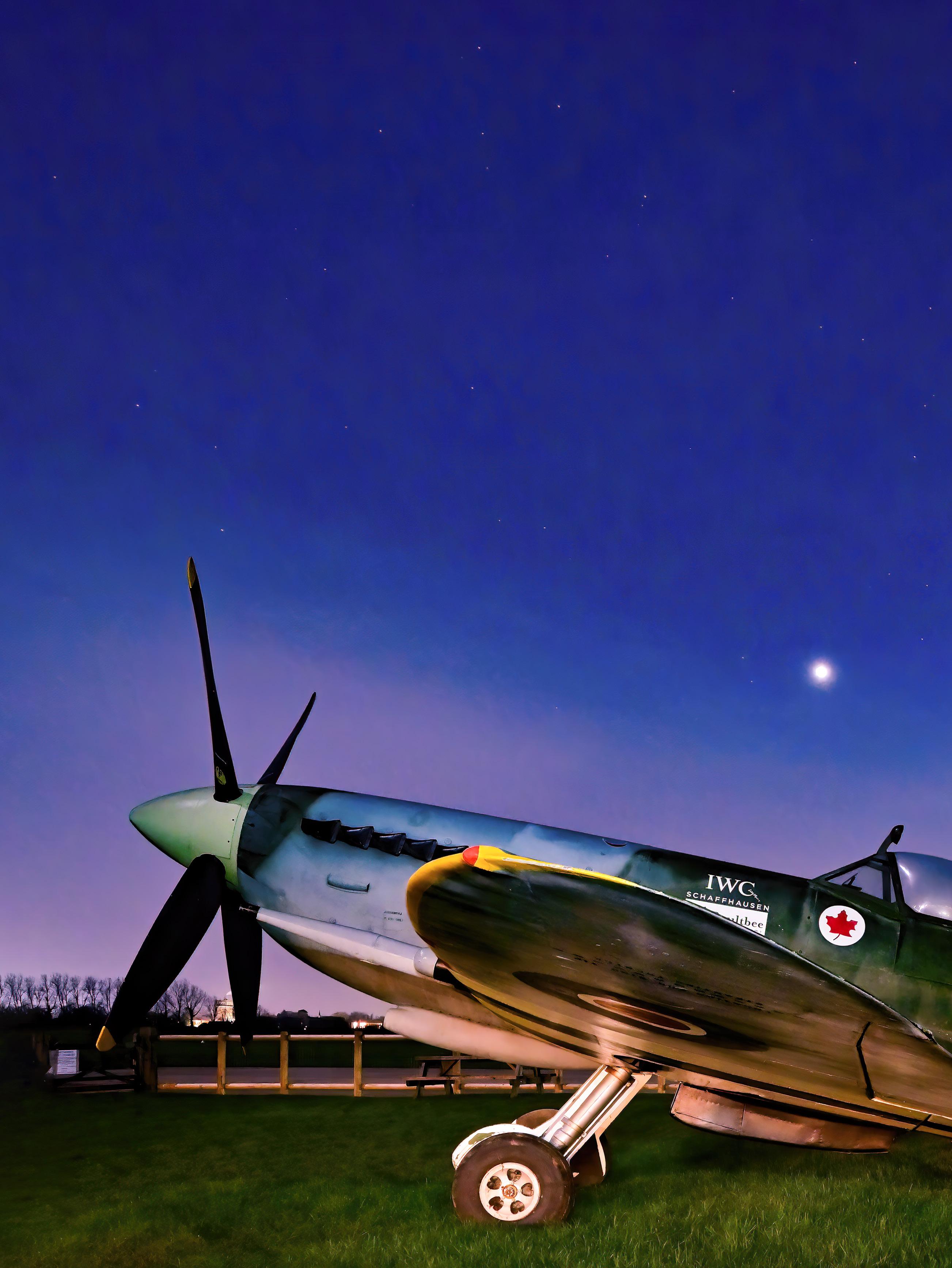
3 minute read
Starry might spitfire
Starry Night Spitfire
I was watching a YouTube video by Richard Tatti, an Australian photographer with a passion for astrophotography. Sitting in my easy chair, I thought, I can have a go at this light painting right now using the old Spitfire by the tarmac at the Goodwood Aerodrome! PAUL S DIETTE
This retired Spitfire is painted in the colours and markings of Spitfire Ace, Air Vice Marshall James Edgar Johnson (aka Johnnie Johnson), MK392 (JE-J) with D-Day stripes, as flown on his last victory of World War II. Featuring a 27 litre Rolls-Royce Merlin engine, Johnson’s Spitfire was originally produced in June of 1944 as a MK.IXc. As with many MK.IXc Spitfires, it was modified in the field with the upgraded armament specifications and placements needed to become a MK.IXe. The airplane is light painted under a starry winter night sky at Goodwood Aerodrome (identifier EGHR) in Chichester, England. The winter night sky includes the brightest planet, Venus, and stars visible to the west of the aerodrome. Why this photo? On a clear night in early February, 2020, I was watching a YouTube video by Richard Tatti, an Australian photographer with a passion for astrophotography. His specialty is light painting foreground elements with a flashlight to create some amazing astrophotography nightscape images. His YouTube channel (https://www.youtube. com/channel/UC-KNiVo4X76cJIMphH1lEdA) is filled with excellent tutorials to get you started and inspired. Sitting in my easy chair, I thought, I can have a go at this right now using the old Spitfire by the tarmac at the Goodwood Aerodrome! I walk past this beautiful airplane every time I enter the aerodrome where I often go flying. I called the aerodrome to arrange after-hours access, grabbed the Nikon Z 50 kit and travel tripod that I had with me in Chichester, a variable output pocket LED flashlight, and headed to the grass near the Spitfire. When I got there I still had a about an hour to go before sunset. This gave me time to play with the composition and configure the Z 50 with the NIKKOR Z DX 16-50mm f/ 3.5-6.3 VR kit lens for this project. I had to use what I had with me that night in Chichester as this was a spontaneous shoot. Throughout the process I was experimenting with various combinations of settings, primarily playing with ISO and shutter speed, to strike a balance between noise, exposure, and the length of the star trails (I wanted little or no star trails). I was also lucky in that there was very little artificial light from the aerodrome car parking paddock reaching the Spitfire, and Venus was also setting to the west over the airplane. In addition to the exposure settings and composition, I also experimented with where to shine my flashlight to light paint the airframe and the grass, sometimes over doing it, sometimes not getting an even result. I also tried light painting the cockpit Plexiglass from behind to see if some rim lighting would work. I found that my flashlight’s lowest output gave me the most time to slowly foreground light paint the airplane and the grass while retaining a nice balance with the night sky. The example you see reproduced here on pages 8-9 used an 18mm focal length (27mm net effective length), exposure of 13.0 seconds, f/8, ISO 1250, center weighted average metering, auto white balance, AI Servo AF in pinpoint mode with 100% zoomed in focus checks using my flashlight to light the target decal markings on the sidewall of the cockpit, manual mode, a delayed release shutter with silent shutter (to eliminate shutter and camera shake), sRGB colour space, 16-bit NEF raw file plus 8-bit JPG. Post production of the NEF raw file was done with Photoshop 2020, with noise reduction, sharpening, and enlargement done using Topaz Labs AI Utility Bundle and exported to a tiff file for reproduction.
Richard Tatti’s website https://nightscapeimages.com.au/
PAUL DIETTE









